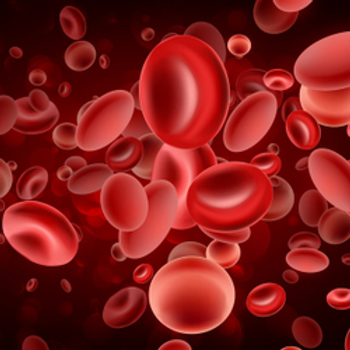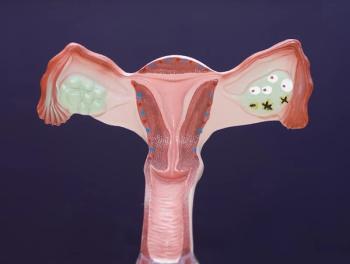Introduction
The World Health Organization classification system of ovarian cancer, published in 2014 by Kurman et al, eliminated the older practice of grading serous tumors on a continuum (grade 1, 2, or 3) and instead differentiates low-grade serous and high-grade serous ovarian cancers as two distinct diseases.[1] In general, tumors previously classified as grade 1, and most of those classified as grade 2 according to the old system, are now classified as low-grade serous ovarian cancers (LGSOCs). Those tumors previously classified as grade 3 are now considered high-grade serous ovarian cancers (HGSOCs).
LGSOCs comprise 5% to 10% of serous ovarian cancers and 6% to 8% of all ovarian cancers.[2,3] LGSOCs are well differentiated and develop through serous borderline precursor lesions, whereas HGSOCs are poorly differentiated and have no known precursor lesion in the ovary; however, research suggests that many cases of HGSOC actually originate from serous tubal intraepithelial carcinomas found in the fallopian tube.[4]
Clinically, LGSOC is associated with a younger age at diagnosis (median age, 45–57 years), slower growth, and resistance to chemotherapy.[5-8] Immunohistochemical staining is useful in differentiating between HGSOC and LGSOC, as p53 mutations are rare in LGSOCs but are found in 96% of HGSOCs.[9] Mutations in KRAS are prevalent in both serous borderline ovarian cancers and LGSOCs (35%–57% of cases) but rare in high-grade carcinomas, whereas mutations in BRAF are prevalent in serous borderline disease and early-stage LGSOCs but rare in advanced LGSOCs and high-grade carcinomas.[10-13] Furthermore, patients with LGSOC harboring a BRAF V600E mutation may be more likely to have improved prognosis compared with those without such a mutation.[11]
Primary Treatment
A patient may be diagnosed with a primary LGSOC or may develop LGSOC following a prior diagnosis of serous borderline disease (low malignant potential). Recurrences observed after a primary diagnosis of borderline disease are LGSOCs 75% to 80% of the time.[14]
Preoperative analyses should include serum CA-125 testing, computed tomography or magnetic resonance imaging of the abdomen or pelvis, and chest x-ray. Although fertility-sparing surgery is appropriate in patients with serous borderline disease who desire future fertility, patients with LGSOC should have definitive staging surgery with total abdominal hysterectomy, bilateral salpingo-oophorectomy, omentectomy, lymph node assessment, and resection of all macroscopic disease.
Most patients with LGSOC will present with advanced disease. Despite poor rates of response to chemotherapy, the standard of care continues to be adjuvant chemotherapy following attempted debulking to achieve no gross residual disease. Given the lack of data showing any regimen that is superior to standard treatment, I continue to treat these patients with chemotherapy and generally use intravenous/intraperitoneal (IV/IP) chemotherapy in patients with optimally debulked stage III ovarian cancer. I use once-every-3-week carboplatin in combination with weekly paclitaxel for all other patients with stage IC–IV disease, and for those who are unable or unlikely to tolerate IP chemotherapy. Observation alone is sufficient for those rare patients with stage IA or IB disease. For patients with evidence of low-volume residual disease following completion of initial chemotherapy, I favor a maintenance strategy with an aromatase inhibitor such as letrozole; this is based upon an extrapolation of the activity of hormonal therapies in recurrent disease, not on prospective data.
Recurrent Disease
Patients with LGSOC have a prolonged survival (median overall survival, 82–126 months) and are often treated with multiple agents over many years for recurrent disease.[15,16] In patients who are appropriately selected for secondary debulking-those without ascites or carcinomatosis, limited sites of disease, and longer progression-free survival (PFS)-secondary cytoreduction to no gross residual disease has been shown to result in an overall survival of 167.5 months compared with 88.9 months in patients left with gross residual disease.[17]
The rates of response to chemotherapy in this setting have been disappointing. Although prospective data are lacking, Gershenson et al reported a study of 59 patients treated with a total of 108 cytotoxic regimens, and found a 3.7% response rate to chemotherapy.[6] Despite the poor outcomes reported, chemotherapy remains a standard of care for treatment of recurrent disease. Hormonal therapies are also appropriate for use in the recurrent setting. Another retrospective study performed by Gershenson et al reported on 64 patients who were treated with hormonal therapy at MD Anderson Cancer Center and were found to have an objective response rate of 9% and a stable disease rate of 62%. In that study, radiographic response by Response Evaluation Criteria in Solid Tumors 1.1 was seen in patients treated with anastrozole, letrozole, or tamoxifen.[18] It is not clear whether or not estrogen receptor/progesterone receptor staining results are predictive of response to hormonal therapy. However, given the overall poor rates of response to cytotoxic chemotherapy, staining results should not preclude the use of these potentially active and nontoxic therapies for treatment of recurrent disease. Because LGSOC is a hormone-responsive disease, hormone replacement therapy should be avoided in these patients.[19]
KEY POINTS
- Low-grade serous ovarian cancer is a rare disease, accounting for < 10% of ovarian cancer cases.
- Initial treatment consists of surgical staging and adjuvant chemotherapy.
- Recurrent disease is relatively chemoresistant;
hormonal therapies, as well as bevacizumab and MEK inhibitors, have shown some promising results.
Retrospective data from both MD Anderson and Memorial Sloan Kettering Cancer Center (MSKCC) have shown promising response rates associated with use of the monoclonal antibody bevacizumab for recurrent LGSOC, with response rates for bevacizumab in combination with chemotherapy reaching 40%.[20] Therefore, I favor the use of bevacizumab either as a single agent or in combination with paclitaxel, liposomal doxorubicin, or topotecan (in select cases) for the treatment of recurrent disease.
A phase II study of selumetinib, an oral small-molecule inhibitor of MEK1/2, has shown promising results in patients with recurrent LGSOC, with a 15% objective response rate (1 complete response, 7 partial responses). Based on those results, larger studies were initiated.[10] The MILO study, a phase III study of MEK162 (binimetinib) vs physicians’ choice of chemotherapy in patients with recurrent LGSOC, closed in April 2016 after a planned interim analysis showed that the hazard ratio for PFS crossed the predefined futility boundary. A separate phase II/III study of the MEK inhibitor trametinib vs physicians’ choice of chemotherapy or hormonal therapy (ClinicalTrials.gov identifier: NCT02101788) is ongoing. Despite these setbacks, MEK inhibitors have resulted in extraordinary and sustained results in certain patients. A study from MSKCC of patients with LGSOC who experienced sustained complete responses to MEK inhibition identified novel alterations affecting the mitogen-activated protein kinase pathway, potentially sensitizing these patients to MEK inhibition.[13] Presently, however, there is not a clearly defined biomarker for sensitivity to MEK inhibition within this disease. The aforementioned phase II study of selumetinib found no association between BRAF or KRAS mutation status and response to therapy.[10]
Conclusions
LGSOC is a rare, slow-growing cancer that is generally resistant to cytotoxic chemotherapy. In the upfront setting, treatment recommendations mimic those of HGSOC. In the recurrent setting, the use of hormonal therapies; bevacizumab; and, potentially, targeted therapies such as MEK inhibitors may offer advantages over or in combination with cytotoxic chemotherapy. Ongoing studies seek to identify relevant biomarkers that may help predict responses to targeted therapies in patients with LGSOC.
Financial Disclosure: The author has no significant financial interest or other relationship with the manufacturers of any products or providers of any service mentioned in this article.
References:
1. Kurman RJ, Carcangiu ML, Herrington CS, Young RH, editors. WHO Classification of Tumors of Female Reproductive Organs, 4th ed; 2014.
2. Plaxe SC. Epidemiology of low-grade serous ovarian cancer. Am J Obstet Gynecol. 2008;198:459.e1-e8; discussion e8-e9.
3. Schmeler KM, Gershenson DM. Low-grade serous ovarian cancer: a unique disease. Curr Oncol Rep. 2008;10:519-23.
4. Zeppernick F, Meinhold-Heerlein I, Shih IeM. Precursors of ovarian cancer in the fallopian tube: serous tubal intraepithelial carcinoma--an update. J Obstet Gynaecol Res. 2015;41:6-11.
5. Crispens MA, Bodurka D, Deavers M, et al. Response and survival in patients with progressive or recurrent serous ovarian tumors of low malignant potential. Obstet Gynecol. 2002;99:3-10.
6. Gershenson DM, Sun CC, Bodurka D, et al. Recurrent low-grade serous ovarian carcinoma is relatively chemoresistant. Gynecol Oncol. 2009;114:48-52.
7. Schmeler KM, Sun CC, Bodurka DC, et al. Neoadjuvant chemotherapy for low-grade serous carcinoma of the ovary or peritoneum. Gynecol Oncol. 2008;108:510-4.
8. Vang R, Shih IeM, Salani R, et al. Subdividing ovarian and peritoneal serous carcinoma into moderately differentiated and poorly differentiated does not have biologic validity based on molecular genetic and in vitro drug resistance data. Am J Surg Pathol. 2008;32:1667-74.
9. Cancer Genome Atlas Research Network. Integrated genomic analyses of ovarian carcinoma. Nature. 2011;474:609-15.
10. Farley J, Brady WE, Vathipadiekal V, et al. Selumetinib in women with recurrent low-grade serous carcinoma of the ovary or peritoneum: an open-label, single-arm, phase 2 study. Lancet Oncol. 2013;14:134-40.
11. Grisham RN, Iyer G, Garg K, et al. BRAF mutation is associated with early stage disease and improved outcome in patients with low-grade serous ovarian cancer. Cancer. 2013;119:548-54.
12. Singer G, Oldt R 3rd, Cohen Y, et al. Mutations in BRAF and KRAS characterize the development of low-grade ovarian serous carcinoma.
J Natl Cancer Inst. 2003;95:484-6.
13. Grisham RN, Sylvester BE, Won H, et al. Extreme outlier analysis identifies occult mitogen-activated protein kinase pathway mutations in patients with low-grade serous ovarian cancer. J Clin Oncol. 2015;33:4099-105.
14. Gourley C, Farley J, Provencher DM, et al. Gynecologic Cancer InterGroup (GCIG) consensus review for ovarian and primary peritoneal low-grade serous carcinomas. Int J Gynecol Cancer. 2014;24:S9-S13.
15. Bodurka DC, Deavers MT, Tian C, et al. Reclassification of serous ovarian carcinoma by a 2-tier system: A Gynecologic Oncology Group Study. Cancer. 2012;118:3087-94.
16. Gershenson DM, Sun CC, Lu KH, et al. Clinical behavior of stage II-IV low-grade serous carcinoma of the ovary. Obstet Gynecol. 2006;108:361-8.
17. Crane EK, Sun CC, Ramirez PT, et al. The role of secondary cytoreduction in low-grade serous ovarian cancer or peritoneal cancer. Gynecol Oncol. 2015;136:25-9.
18. Gershenson DM, Sun CC, Iyer RB, et al. Hormonal therapy for recurrent low-grade serous carcinoma of the ovary or peritoneum. Gynecol Oncol. 2012;125:661-6.
19. O’Donnell RL, Clement KM, Edmondson RJ. Hormone replacement therapy after treatment for a gynaecological malignancy. Curr Opin Obstet Gynecol. 2016;28:32-41.
20. Grisham RN, Iyer G, Sala E, et al. Bevacizumab shows activity in patients with low-grade serous ovarian and primary peritoneal cancer. Int J Gynecol Cancer. 2014;24:1010-4.



















































































